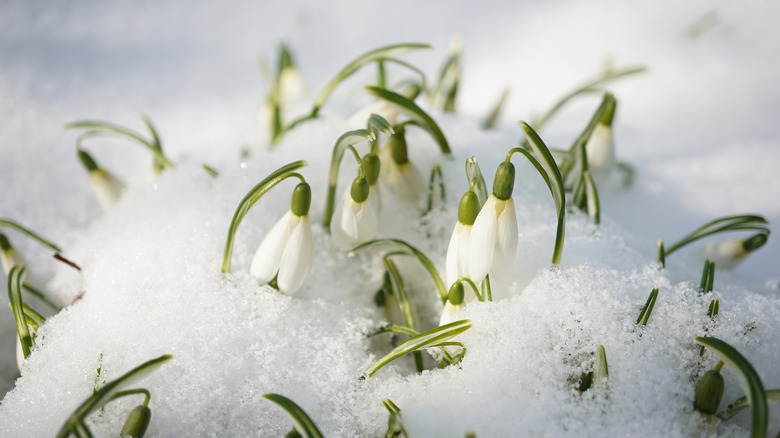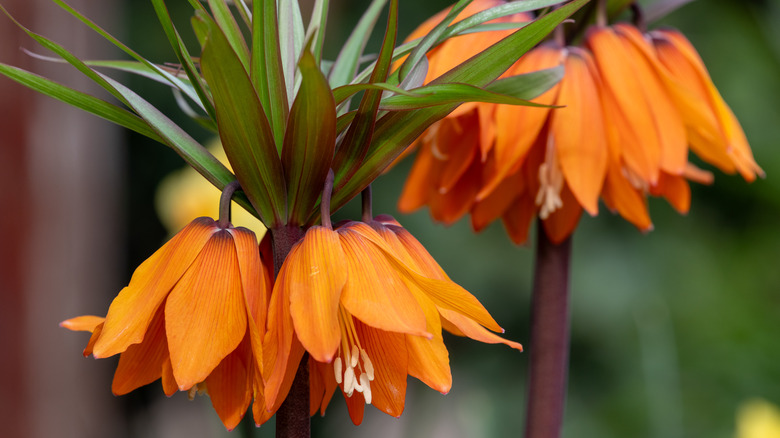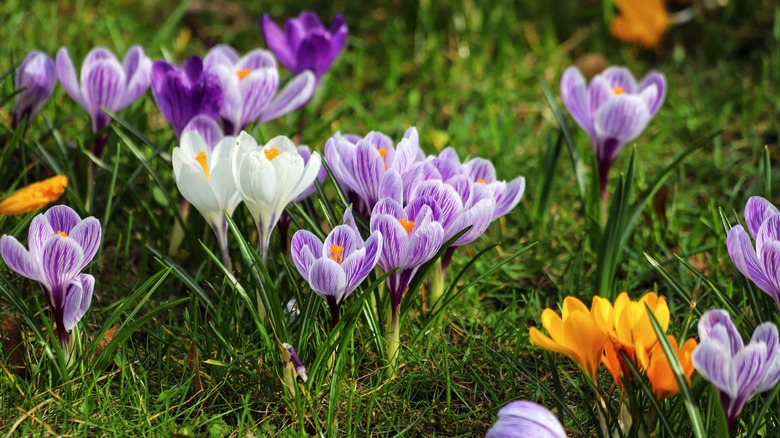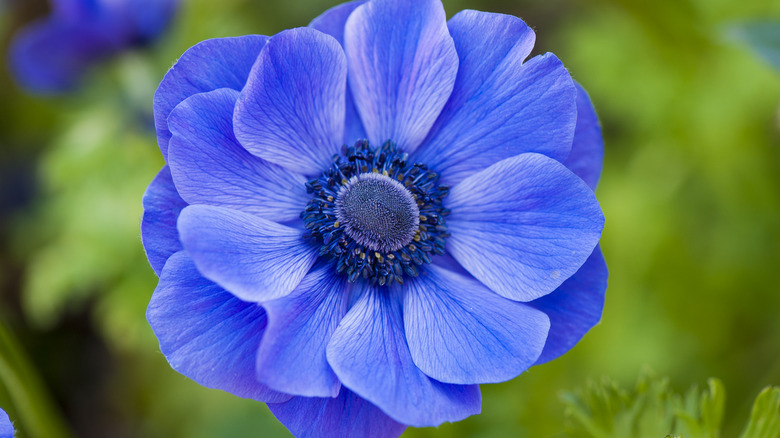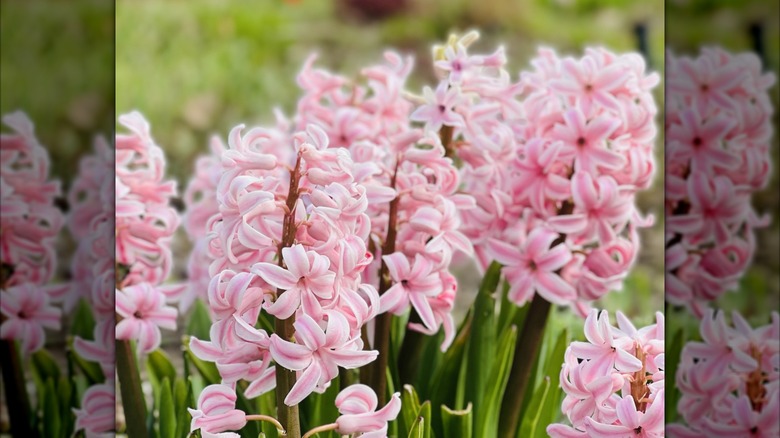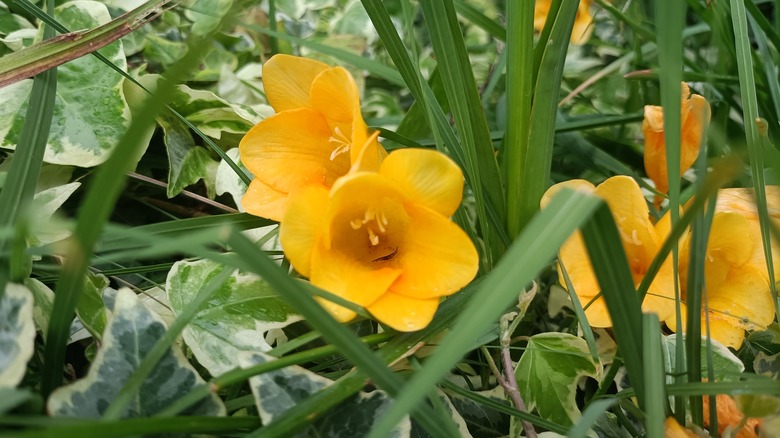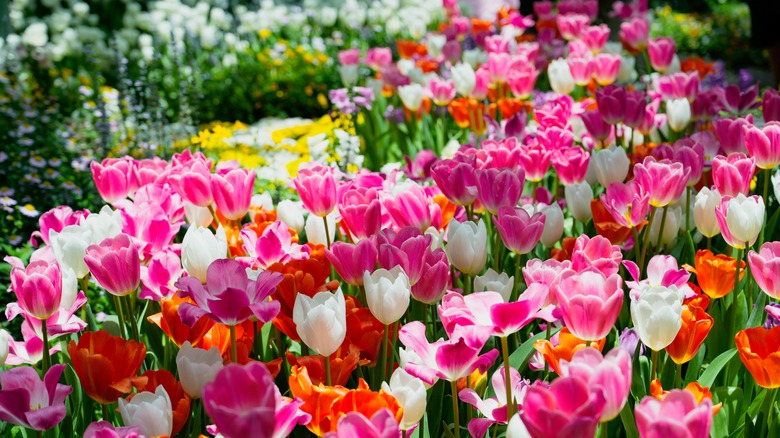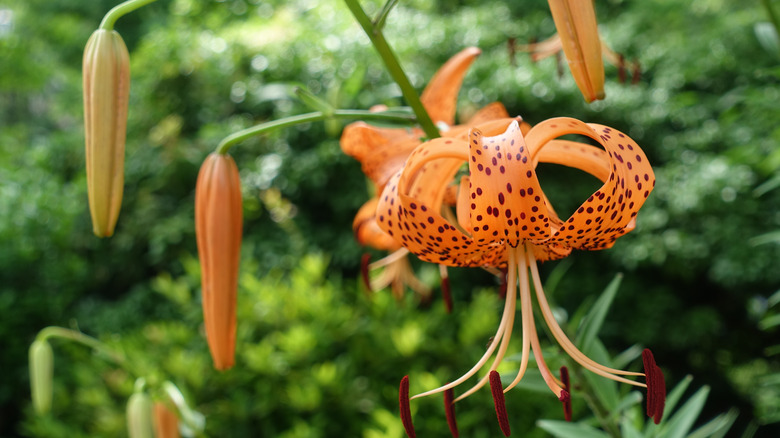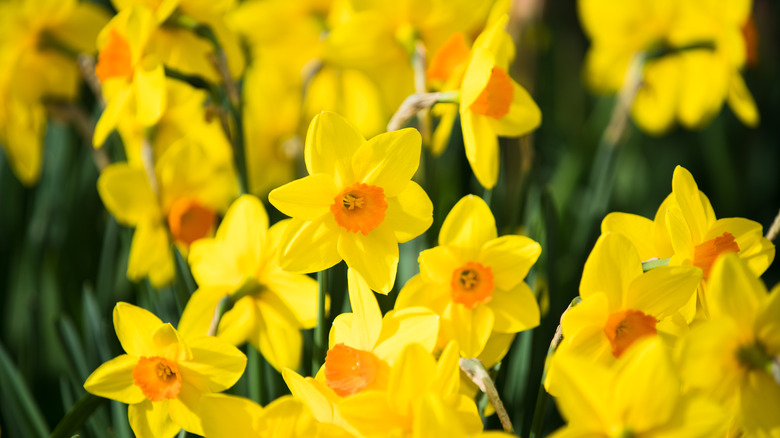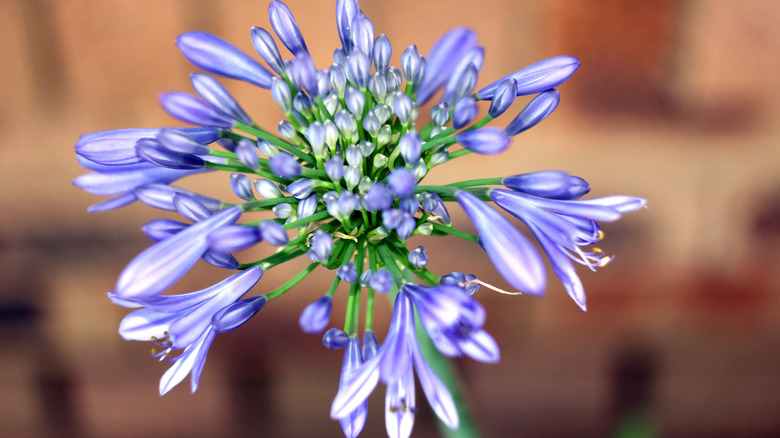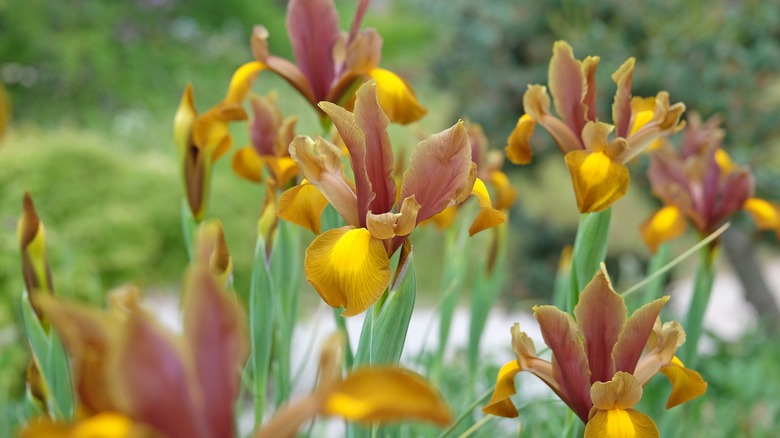The 14 Best Bulbs To Plant In August For Showstopping Blooms Next Spring
Emily Dickinson thought hope was the "thing with feathers," but a flower bulb seems like a better metaphor for hope. Tucked into the earth months in advance, bulbs are packed with promise of a colorful spring garden that helps us shake off winter doldrums. August isn't too early to begin pining for next spring's awakening. There are a good number of flower bulbs that are just right for planting this month, some well-known and others a bit more obscure.
These spring-blooming flowers span the color spectrum and aren't limited to just one growing zone. Tulips and daffodils are well-known spring bloomers, but you might not be aware that August is the perfect time to settle their bulbs into the soil. There are lesser-known flowers like Persian buttercups, fritillaria, and Sicilian honey garlic worth getting acquainted with. As your flower garden reaches its peak and past it, make space in your beds as well your schedule for some planting that will pay off in spades once the sun's warmth gathers strength.
There are a few guidelines to follow when planting all spring-blooming bulbs. Soggy gardens are not their friend; make sure that you're planting them in well-draining soil. They favor full sun or partial shade. Also, spring bloomers like to be buried about twice as deep as their bulb is tall, and make sure to plant them with their root-end down and pointed-end up. If it's not really obvious which end is which (as is the case with some bulbs), the root end should have a firm base and a few hints of roots forming.
Snowdrop
After a snowfall, once the late winter sun melts away the top few inches of the tiresome white stuff, finding a blooming snowdrop (Galanthus nivalis) is nothing short of a miracle. The drooping white bells of snowdrops — also known as the Fair Maid of February – may be the first flowers of the season to make your heart skip a beat. They are delightfully deer- and rabbit-resistant and the bees' first floral meal of the season. Snowdrops grow between 4 and 10 inches tall. Enjoy this harbinger of spring in USDA Hardiness Zones 3 to 8.
Fritillaria
If you're the type who likes uncommon additions to your garden, put fritillaria on your list. There are numerous types that punch in at different heights, so your pick may depend on what you plant around it. Crown imperials (Fritillaria imperialis) top out around 24 to 36 inches tall and will be guaranteed thrillers among your spring flowers. For a less statuesque variety, Michael's flowers (Fritillaria michailovsky) wave their heads at 8 inches high. Most fritillaria favor full sun to part shade with soil on the drier end. They are well-suited for zones 4 to 8.
Crocus
Just when your eyes can't take another minute of snow-covered land and browned grasses, crocuses arrive with the gift of color. Flowers in gradients of purple, yellow, and white sometimes poke through a crust of snow to delight both us and the bees. If they're spring-blooming, August is the perfect time of year to plant crocuses. Grouping crocus bulbs in odd numbers, spaced 3 inches apart, helps them put on a pleasant show. These common — yet still gorgeous — spring flowers are hardy in zones 3 to 8.
Anemone
One glance at these friendly looking flowers will sell you on investing in anemone bulbs this August. Anemone flowers also go by the poetic name windflower and come in nearly every color imaginable. Anemones will bring more pollinators into your yard and garden, especially bees and butterflies, but aren't palatable to deer and rabbits. In fact, they are poisonous to eat and can cause contact dermatitis, so they might not be the best choice if you have family members prone to nibbling on plant life. Anemones are hardy in zones 4 to 9.
Hyacinth
Hyacinths (Hyacinthus orientalis) are among the most sense-pleasing season-opening flowers. From their Easter egg hues to their evocative scent, a spring garden without hyacinths isn't complete. Once the warm weather has settled in a bit, watch them unfurl their petals into cones of pink, blue, purple, red, or white stars. Hyacinths are easy to maintain and aren't appealing to rabbits. These beauties put on less impressive shows each year after their first bloom, so many gardeners choose to replace the bulbs every few years. They grow between 5 and 12 inches tall and are hardy in zones 4 to 8.
Freesia
Like hyacinths, freesias are treats for both the eyes and nose. The scent of these natives of southern Africa is prized in perfumery, and they bloom in white, yellow, orange, tan, pink, blue, and purple. Freesias do well once cut and brought indoors. They grow to between 12 and 18 inches tall. Freesias that you plant in August are only hardy in zones 9 and 10.
Tulip
What's an image of Holland without the fields of tulips (and, of course, a windmill in the background)? These iconic blossoms actually come from much farther south and east on the Eurasian continent than the Netherlands. Available in virtually every color except true blue, a clustering or scattering of tulips are a must as part of a spring flower display. They grow between 4 inches and 2 feet, 4 inches high and are hardy in zones 3 through 8.
Tiger lily
With its exotic name and appearance, tiger lilies (Lilium lancifolium) look like they'd be more at home in a tropical garden than one in a midwest state. Tiger lilies are known for their dark-spotted orange petals, but you can find varieties in peach, magenta, yellow, and variegated purples, reds, and orange. They tend to grow a bit more vigorously than some gardeners like. However, tiger lilies aren't listed as invasive. Some reach up to 6 feet in height, but they can also top out as short as 2 feet. Tiger lilies grow well in zones 5 to 8.
Allium
Who knew that onion flowers could be pretty? Alliums are also known as ornamental onions, and their purple orb-shaped poofs atop slender green stems make striking accents among more conventional spring blossoms. The flowers reach between 1 to 3 feet tall, often rising above other flowers for a pleasing layered effect. They do have a low severity of poison in all of their parts, so don't eat this onion. If you live in zones 4 to 9, plant some alliums to make your garden a pollinator haven.
Daffodil
Spying the first daffodil (Narcissus) of the season begins to warm your winter-solid heart. By the time scores of them appear, you'll be fully thawed (and awed). These symbols of spring come in yellow, white, and combinations of the two along with occasional deep orange-yellow centers. They are listed as having medium toxicity, and touching any part of the plant can cause extreme skin irritation. However, enjoying daffodils with just your eyes is worth the extra care while handling them. Daffodils can grow between 8 inches and 2 feet, 6 inches tall and are hardy in zones 4 through 8.
Persian buttercup
In all the colors of roses and more, Persian buttercups (Ranunculus asiaticus) resemble roses that have had a few too many snacks. Rounded out and chock-full of petals, or sometimes open and looking like a poppy with more petals, Persian buttercups add a novel yet still familiar element to your flower beds. These hybrids stand between 1 and 2 feet tall. Deer and rabbits typically aren't tempted by Persian buttercups, though they're hardy only in zones 8 to 11.
African lily
Hailing from a distant hemisphere, the African lily (Agapanthus) is a stately, purple flower resembling an allium. Instead of just a lovely purple, African lilies also bloom in purples, blues, and whites. If you live in zones 8 to 11, add these bulbs to your planting list; like with Persian buttercups, don't plant these bulbs in August if you're in zones cooler than 8. They grow to anywhere between 1 and 5 feet tall.
Bulbous iris
Not all irises are created the same. Some grow from rhizomes and others grow from bulbs, and we're honing in on the latter here. Spanish irises (Iris xiphium), the scented juno iris (Iris bucharica), and the hybrid Dutch iris (Iris x hollandica) all grow from bulbs. Dutch and juno irises grow to 2 feet tall, and Spanish irises get about 3 feet tall. Be careful handling the Dutch iris, as it causes dermatitis and parts are poisonous. Not all varieties are frost hardy, so make sure your chosen type is suited for your area before investing money and time.
Sicilian honey garlic
The name is off-putting, for sure, but one glance at the Sicilian honey garlic flower (Nectaroscordum siculum) and you'll fall under its spell. With umbrella-shaped stems holding a collection of greenish copper-pink-white bells, it's a wonder this flower isn't better known. What's more, these glories can skyrocket up to 4 feet tall. Sicilian honey garlic is part of the allium family and smells garlicky when crushed. These gorgeous spring flowers will bring beneficial bees to your yard in zones 5 to 10.

